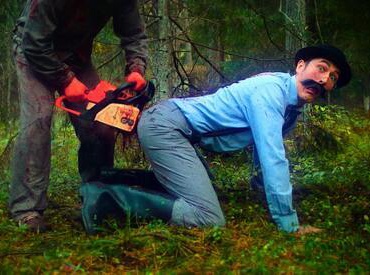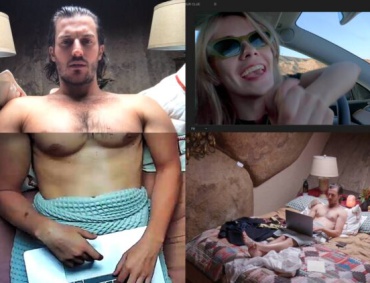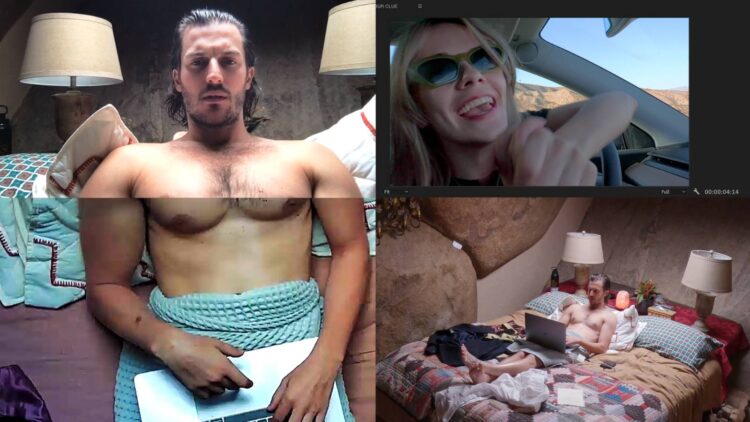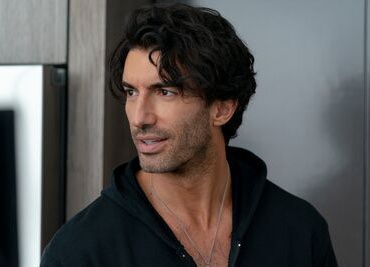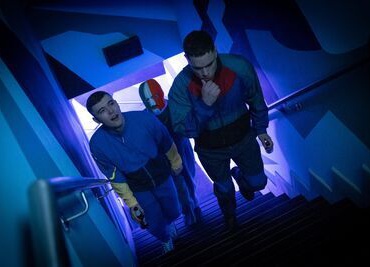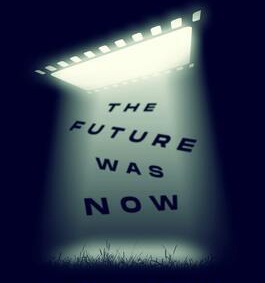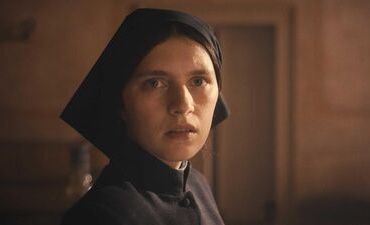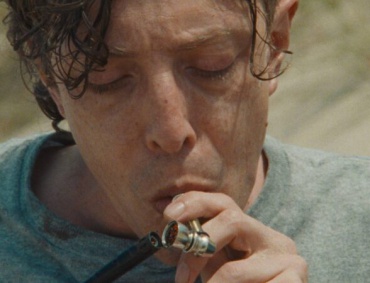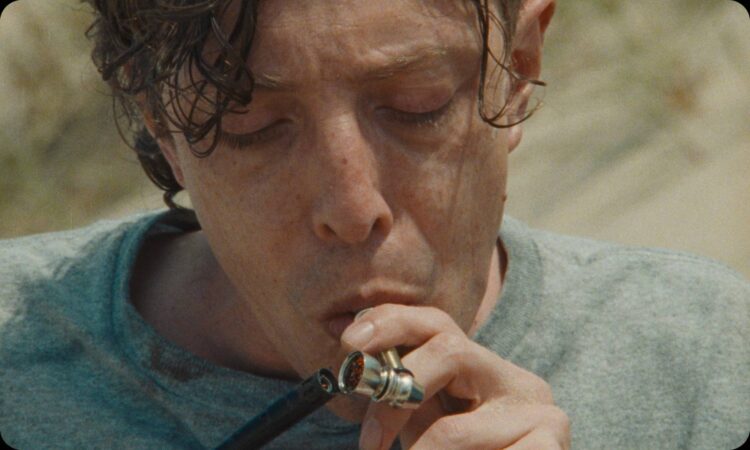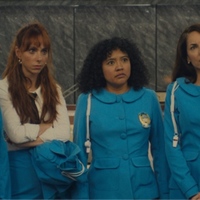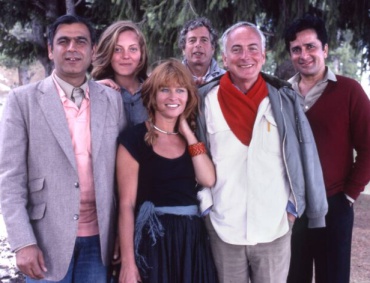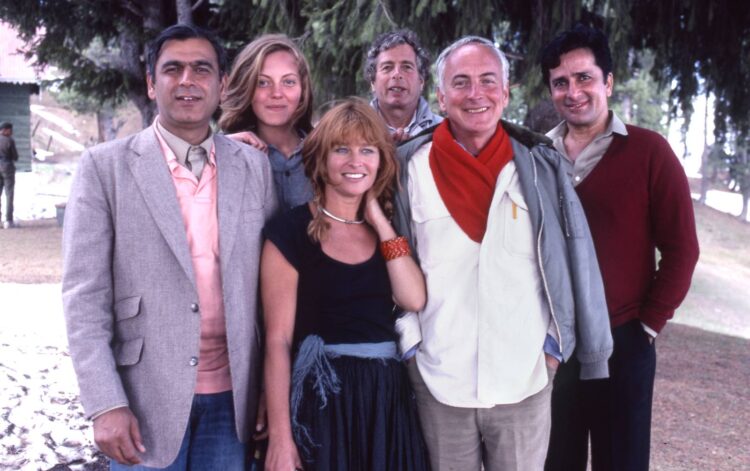
On Mondays at the Wayfarer Studios offices, there’s a tradition during meetings in which everyone in attendance has to answer the same question: What’s something that’s bringing you joy that has nothing to do with work or family? This is the sort of thing that has the potential to be painfully precious—a strained attempt at bringing some warm-and-fuzzy energy to the soullessness of the workplace—but the folks here at this Los Angeles production company take it seriously, especially its co-founder Justin Baldoni. The tradition was started by Wayfarer’s CEO Jamey Heath, an award-winning music producer, but it resonates with Baldoni, who radiates a positive vibe and seeks it out in others.
“We’re family,” Baldoni, 40, tells me on a recent Monday at their Beverly Hills offices. “As I was building this [company], it just became clear that what he had as a human, and the way he handles himself in the world and in business, was what we were striving to be as a company. If we want to have real change in the industry, we have to try to be the change. We’re going to fail all the time, because we’re humans and we’re perfectly imperfect. But what he brings is that innate joy and zest for life.”
Everybody goes around the room listing things that are bringing them joy—someone’s looking forward to a vacation, someone else heard an inspiring story—and the friendly vibe in the room is palpable. I’m here to profile Baldoni—the onetime “Jane the Virgin” star who has rebranded himself as a filmmaker about to release his biggest movie to date, “It Ends With Us,” in a few weeks—and I’m conscious of the fact that office visits from a journalist sometimes compel employees to be on their best behavior. Still, if the idea of such feel-good meeting exercises seems cringey, it’s clear everyone at Wayfarer has bought in.
That true-believer attitude starts at the top. Baldoni is nothing if not a man who has faith in his mission to create something new at Wayfarer, preaching a gospel of creating films and series of substance in an age of deadening social-media overkill. That philosophy is embedded in the company’s very moniker. “‘Wayfarer’ stands for the journey of the soul,” explains Baldoni. “It’s named after the Wayfarer in a book called The Seven Valleys and the Four Valleys, which comes from the Baha’i Faith, which is my faith. It’s the journey of the soul, trying to figure life out. Whether you are a believer in God or whether you’re spiritual—whatever you are—it’s that journey of just trying to understand the world around us and yourself in the process.”
Those who only remember Baldoni from his years on “Jane the Virgin,” where he played the hunky love interest Rafael Solano, may find all this a bit much. Didn’t that dude just take off his shirt a lot? (Baldoni was shirtless previously on “Everwood” as well.) Much has changed since then—including a popular 2017 TED Talk in which Baldoni articulated the conflict he felt between the traditionally manly roles he played on television and the sensitive, vulnerable guy he felt he was. The Justin Baldoni you meet in 2024 is an outspoken feminist and budding mogul who’s convinced that Hollywood needs to let go of its exhausted, empty CGI-driven action flicks and move toward more emotionally fulfilling films. And he thinks “It Ends With Us” could be part of that future.
Don’t get Baldoni wrong: He loves event movies. In a screening room earlier that day, he tells me how much he treasures “going and sitting in a dark room with people that we don’t know and having a shared experience. I remember crying in ‘E.T.’ I remember sobbing watching ‘Lion King’ in the theater and hearing other kids crying. I remember being in high school and having that experience with ‘Titanic’ and then later on with ‘The Notebook’ and feeling like I wasn’t alone. Having a place, especially as a young man, to be able to emote in a dark room: ‘I can cry and other people are crying. We shared this moment in time together.’ For me, it’s poetic.”
In his TED Talk and in his subsequent book Man Enough: Undefining My Masculinity, Baldoni promotes a modern manhood that’s in touch with its emotions and rejects outdated notions of what his gender requires of him. In recent years, plenty of telegenic men have peddled themselves as “You see, ladies, I’m sensitive” feminists, many of them coming across as cynical, disingenuous attention-seekers capitalizing on a trend. But Baldoni, who’s been married to his wife Emily since 2013, is refreshingly candid about just how flawed his attempts to be enlightened are. And, blessedly, he’s not proud of himself for his progressive views—in fact, he’s careful to be modest, knowing that he can screw up as much as the next guy. But the passion he brings to his “Man Enough” campaign—which includes a long-running podcast—is equal to his evangelizing for a different type of movie experience. In fact, he sees them as intertwined.
“Human emotion is not something that we should be running from,” he says. “If somebody wants to go to the theater and just have a mind-numbing experience, then there’s a lot of movies for them. But if they want to see a Wayfarer movie, then my hope is that five, 10 years in the future, they know they’re going for that reason—they’re going to get the action or the adventure or whatever the story is about, and then they’re also getting the substance that allows them to connect with that part of themselves. I don’t think that that’s utopian—I don’t think that that’s too aspirational. We need meaning—we’re a country that has been living off junk food, and look at our health overall. I think movies are the same way—what we ingest, what we focus on, what we think about is who we become. It might be a lofty idea and it might be disruptive in terms of the normal studio model, but I think that’s where it’s going. I think that’s where cinema has to go.”
Wayfarer has been producing movies for only a few years, including Baldoni’s second directorial effort, 2020’s “Clouds.” On its website, the company declares its priority of “championing inspirational stories which unite as true agents for social change.” Recently, Wayfarer financed “Will & Harper,” the crowd-pleasing Sundance documentary featuring Will Ferrell and longtime friend Harper Steele on a road trip after she came out as transgender. But the company isn’t just interested in traditional inspirational films, as witnessed by the fact that Wayfarer was involved in this year’s “The Garfield Movie.” What prompted Baldoni to put his muscle behind that animated cat flick, which seems to be standard Hollywood product? “We went in as investors because it had an amazing father-son storyline,” he explains, “and it tied into masculinity and my work with ‘Man Enough.’ We saw that as an opportunity. Have you looked at ‘Inside Out 2’? I took my nine-year-old daughter and my six-year-old son, and I cried, and it started conversations with me and my kids. That’s what we need—that’s what we’re craving.”
As is probably obvious, Baldoni is an earnest, enthusiastic guy. He’s exceedingly handsome but weirdly approachable. And if you get him talking about Wayfarer’s ambition to create more nourishing commercial cinema, he’s practically an evangelist for his vision. When I comment on his near-missionary zeal, Baldoni responds, “I think that the only way to start anything that [has] the chance of success is if the person who is starting it believes in it with everything that they have. Life is so delicate and short and fragile—and I’ve spent so much time contemplating mortality and spending time with people who didn’t have time on this planet—that I view it as a sacred gift, as silly as that sounds.”
This conversation is happening in Wayfarer’s parking lot. He’s just driven me from the screening room to the offices, but he doesn’t get out of the car yet because this is something he wants to talk more about. “Time I view as my most valuable resource,” he continues. “If I’m going to spend my time doing something, I have to believe it. Starting these things—whether it’s trying to get a movie off the ground or starting this business—I genuinely believe that there is a way that we can make some difference in the industry and affect people. I’m always focusing more on the effect. It’s like a movie—to me, the movie starts with the ending and then you work backwards. If you have an amazing ending and you can stick the landing, you can reverse-engineer and create the story. That’s how I think it is with starting a company or a film or my work with masculinity: What is the impact?”
When Baldoni’s acting career was going through rough patches—he still remembers the casting agent who said he wasn’t getting a particular part because his eyebrows were too distracting—he started investing his time in making shorts, discovering a passion for filmmaking. He’d rarely felt attractive enough to be an actor, anyway: “I was the ugly-duckling nerd kid that didn’t have a date to any dances until I was a junior in high school.” After tearing his hamstring, losing college scholarships for soccer and track, he sunk into despair. To compensate, he got buff.
“What got me out of the depression was lifting weights,” he recalls. “I put on almost 20 pounds of muscle in that six, seven months before I left for college. I remember that feeling—I was like, ‘Oh, now I feel strong.’ I didn’t know at the time that I was just masking and delaying the inevitable [mental] healing process that I would have to go through in my 30s. But it was the combination of that and then getting to college and parts of my face growing with the other parts of my face—I maybe became a little more symmetrical—but I was still never the hot guy.”
Among his early directing projects, in 2012 he created “My Last Days,” a documentary series focusing on people with terminal illnesses talking about life, which profoundly reshaped his view on the importance of maximizing one’s time. When he was cast on “Jane the Virgin,” he used his downtime to work on his feature directorial debut, 2019’s “Five Feet Apart,” a tearjerker based on a true story that starred Haley Lu Richardson and Cole Sprouse as young people with cystic fibrosis. The indie film was a smash, and Baldoni followed it up with another true story, “Clouds,” with Fin Argus, Sabrina Carpenter and Madison Iseman, about a teenager with cancer. Dismiss those films as touchy-feely, Baldoni doesn’t care.
“I make movies that I would want to see,” he says. “I come from the school of very commercial cinema. I wasn’t going to the theater to watch arthouse indie movies. I grew up with very commercial films. And I believe that most human beings are hungry for a connection and want to feel, because I think everything in this world is orchestrated in a way that’s making us feel less.”
His third film is his most high-profile, although it certainly sounds akin to his previous two in terms of taking on emotional subject matter. “It Ends With Us” isn’t based on a true story but, rather, Colleen Hoover’s wildly popular 2016 novel. The drama stars Blake Lively as Lily, a woman who falls for Ryle (Baldoni), a seemingly nice guy who ends up displaying abusive behavior. (Around the same time, Lily reencounters an old flame, Brandon Sklenar’s Atlas.) I haven’t seen the film, but the fact that its charitable partner is NO MORE tells you that “It Ends With Us” will be tackling issues that are at the core of Baldoni’s “Man Enough” mission while also speaking to the social causes that are crucial to Wayfarer.
Sight unseen, “It Ends With Us,” which is being released by Sony, is an intriguing early-August release. This summer has been underwhelming commercially, save for some reliable I.P.-driven films like “Inside Out 2,” “Twisters” and “Deadpool & Wolverine,” which have been blockbusters. Can a romantic drama adapted from a bestseller starring Lively find its audience? Initial box-office tracking suggests it could be a sleeper hit, and Baldoni is convinced there are viewers hungry for something like “It Ends With Us.”
In the Wayfarer conference room after everyone else has cleared out, Baldoni tells me, “When I spoke to Sony, [I said], ‘I believe that there are not enough tentpole movies for women—and I believe this [movie] could be an experience for women. I believe if we make it right, they will come—they will cry and they will laugh.’ This was before we had any big stars attached—I just genuinely believe that that’s possible with this movie. I’ve always felt it. Now, what that looks like is different—for me, I don’t put a number on that. Most everybody else is putting the commercial-success expectations on the movie—I just want it to be a movie that a lot of women go see, and they bring men with them, because that’s important.”
Baldoni likes to talk about embracing imperfection, recognizing that all of us make mistakes all the time. In his pursuit of being a more conscientious man, he’s had to confront a classic Hollywood stereotype of the demanding male director as genius and ultimately authority. It’s easy to fall into that trap. “There are always moments where I step back and go, ‘Oh wow, I was on autopilot there and I need to course-correct,’” he says in regards to his life in general. “What’s interesting as it relates to making movies is that I think I’ve been so afraid to accidentally become one of those tyrants. If anything, I think I’ve gone the opposite direction and at times not trusted myself enough. On my first movie especially, I realized in some ways I was too passive. I’ve never raised my voice and yelled on a set—it doesn’t mean I haven’t had big feelings and been angry, but I’ve never raised my voice. That’s not my style. I’ve been around that, and I’ve been on the other end of it, and it feels terrible—it kills the creativity of everybody around you.”
It’s interesting that not only did Baldoni decide to take on a supporting part in “It Ends With Us”—his first acting gig in a while—but that he chose to play the dark, troubled Ryle. Wasn’t he tempted to portray the sensitive Atlas? Why would he want the role of the type of guy he’s spent his public life railing against?
Initially, it was Hoover, the book’s author, who told him she thought he’d make a good Ryle. He was surprised. “I was like, ‘Could I play this guy?’ But her thinking that I could was enough to shift that in me, to where I went, ‘Maybe she sees something that I don’t.’ And as I started developing the project, I started asking women, ‘What is it that you like so much about the book?’ And so many of them said, ‘Ryle.’ I thought the answer was going to be ‘Lily’s empowerment,’ but so many women liked the relationship between her and Ryle. There was a little bit of a fantasy element to it—he was likable and charming, and a little bit dangerous. I think what Colleen probably saw is that the way that I live and who I try to be—sometimes unsuccessfully—could help make Ryle more likable. This isn’t a story where there’s some archvillain—this is a human story, where there’s true love between the two characters. You have to be invested in the relationship between Lily and Ryle, or the movie doesn’t work.”
Baldoni has come a long way from being the beefcake beauty on “Jane the Virgin,” where his frequent shirtlessness became part of the show’s appeal. In his TED Talk, he took playful potshots at his own pin-up image and his uncomfortable relationship with those shirtless scenes. But while he’s careful to avoid “It Ends With Us” spoilers, there is one thing he can reveal, albeit sheepishly: He does take off his shirt in the movie.
“I had a lot of anxiety about it,” he admits, laughing. “I had been training not to look good for a while—I’ve been training to feel good and, honestly, I’ve had some back issues. I wasn’t able to move the way that I used to or run the way that I used to. As I was getting closer to 40, I noticed my metabolism changing. I have two kids, and I’m not sleeping as much. I thought to myself, ‘I haven’t even had time to work out—how am I going to do this?’ So I was nervous about it because of the way he’s described in the book. I felt an obligation to try to look similar to the way that the fans [thought of] him, but I didn’t want to be shirtless in every scene.”
While he prepares for the “It Ends With Us” press tour, he’s also thinking about Wayfarer’s future. At the meeting I attend, he and his team discuss upcoming projects, including “Will & Harper,” which will be getting an awards campaign from Netflix. And, of course, there’s his live-action Pac-Man film, which was announced in 2022. Baldoni can’t go into much detail—I got a glimpse at some initial ideas, but I can’t talk about them—but he does see the movie as continuing Wayfarer’s commitment to films of substance. “We have the idea of what it can be,” he says, “but how do you make it meaningful? Figuring out how to make a big tentpole, four-quadrant kind of family action-adventure movie for both a nine-year-old and a 60-year-old? That’s exciting to me.”
Earlier, when everyone went around the room in the meeting talking about what’s bringing them joy, Baldoni shared his relief that he’s at the end of a health scare that started more than a month ago. He’s doing better now, but he had to be in the hospital for a week, which made him think about his life. It also validated his wife’s insistence that he needs to start taking it a little more easy.
“I’ve been listening to my wife for 12 years about slowing down, and it wasn’t until maybe this last two years ago that I’ve really been taking that to heart,” he admits. “But [“It Ends With Us”]—acting and directing—it was a challenging film because of the amount of hats that I was wearing. Then you end up in the hospital with some random infection and you’re like, ‘Oh, got to slow down.’”
Baldoni says he doesn’t have nightmares about the film tanking or no one liking it. “The things that keep me up at night have more to do with wanting to make sure that I have enough time, uninterrupted, with my family after this. [“It Ends With Us”] has been a gargantuan [undertaking] for a few years, and they really need me—they need their daddy. I’ve told my agents—I told my team—I’m not going to direct anything for a while. I’m going to take a break.”
Stereotypical old-school men might scoff at that suggestion of taking your foot off the gas. But Baldoni is trying not to listen to that impulse. “The only way I’ll ever be able to really function in this industry—an industry that doesn’t care about time, doesn’t care about your schedule, doesn’t care about your plans, doesn’t care about your dreams or your hopes—the only way that I know that I’ll be able to have my joy and be happy in this business is if I expand and contract. Everything in life is expansion and contraction—the waves, our breath, everything. There’s a moment of expansion, and then we have to contract. And I’m entering this next phase of contraction so that I can be the man that I really want to be and be the dad that I really want to be.”
Earlier in the day, Baldoni had told me that he didn’t want to be indispensable at Wayfarer—he wanted to trust the people he hired to run the company without him necessarily being involved in every single aspect of every single project. As our time comes to a close, he returns to that idea.
“The studio was set up in a way where that [freedom] is possible for me, but in the event that there is success, it’s going to require me saying no to a few things,” he confides. “Which, as a person who was said no to so often, there’s fear of, like, ‘Oh, what if I’m going to miss it?’ — that FOMO of ‘This might be the chance.’ But there is power in [saying no]. It all changed for me when my wife asked me, ‘What is enough?’ When I was writing the book and editing ‘Clouds’ and finishing ‘Jane,’ I was doing so much, and she was like, ‘Well, when is it going to be enough? What’s enough?’ That was not a question I was prepared to answer. And the answer is, ‘It’s never going to be enough until we decide it is.’”
Justin Baldoni looks at me. “That’s where we are now as a family. This is enough for right now. And then we’ll move on to the next thing.”





